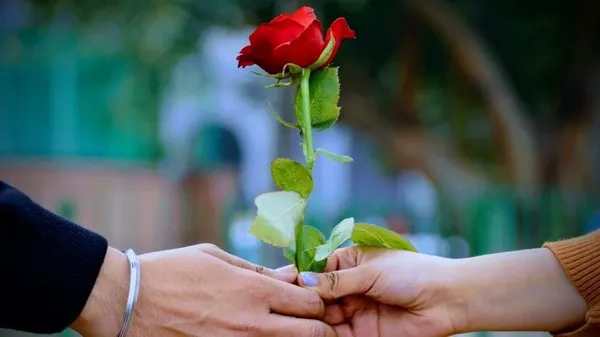Flowers have long been revered as messengers of human emotions, conveying sentiments that words often fail to articulate. From ancient civilizations to modern-day cultures, the act of gifting flowers transcends mere tradition, embodying profound meanings that resonate deeply with both the giver and the recipient. In this exploration, we delve into the rich tapestry of floral symbolism, unraveling the significance behind various flower types, colors, cultural nuances, and occasions.
General Flower Symbolism: A Tapestry of Emotions
The tradition of giving flowers dates back thousands of years, with evidence of floral offerings found in ancient Egyptian tombs and Greek mythology. Across civilizations, flowers have been intertwined with human emotions, serving as silent messengers of love, gratitude, sympathy, and a myriad of other sentiments. The act of presenting flowers is a gesture imbued with profound meaning, symbolizing affection, appreciation, and the fragility of life itself.
In Victorian times, the language of flowers, or floriography, reached its zenith, with specific blooms assigned intricate meanings. A single rose could convey a spectrum of emotions, from passionate love (red rose) to purity (white rose) or friendship (yellow rose). This symbolic lexicon not only facilitated communication in an era of strict social conventions but also added layers of depth to interpersonal relationships.
Meaning by Flower Type: Decoding Nature’s Messages
Each flower species carries its own unique symbolism, rooted in historical, cultural, and botanical contexts. Roses, with their velvety petals and enchanting fragrance, are perhaps the most emblematic of all flowers, embodying love, passion, and romance. Lilies, with their pristine blooms and elegant stature, symbolize purity, virtue, and renewal, often associated with solemn occasions such as funerals and memorials.
Tulips, with their vibrant hues and graceful silhouette, evoke sentiments of perfect love and admiration, making them popular choices for declarations of affection. Daisies, with their cheerful demeanor and unassuming beauty, represent innocence, simplicity, and loyal friendship, making them ideal tokens of appreciation.
Beyond these examples, the symbolism of flowers extends to an extensive array of species, each carrying its own nuanced meanings. From the exotic orchid symbolizing luxury and refinement to the humble daffodil representing new beginnings and rebirth, every flower holds a story waiting to be told through its petals.
Meaning by Flower Color: The Palette of Emotions
The color palette of flowers adds another dimension to their symbolic language, infusing each bloom with nuanced meanings and emotions. Red, the color of passion and desire, imbues roses and carnations with fiery intensity, signifying deep love and longing. Pink, a softer hue, conveys sentiments of affection, gratitude, and admiration, making it a popular choice for expressing heartfelt sentiments.
Yellow, the color of sunshine and joy, evokes feelings of happiness, friendship, and optimism, making sunflowers and daffodils perfect gifts to brighten someone’s day. White, with its purity and simplicity, symbolizes innocence, reverence, and new beginnings, often chosen for weddings, christenings, and other ceremonial occasions.
The symbolism of flower colors is not confined to Western traditions; in Eastern cultures, colors hold their own significance, with red symbolizing luck and prosperity in Chinese culture and white representing mourning and spirituality in many Asian societies. Thus, the interpretation of flower colors is deeply intertwined with cultural contexts and regional customs.
Cultural Variations: A Kaleidoscope of Meanings
Flower symbolism is not a monolithic concept but rather a kaleidoscope of meanings shaped by cultural perspectives and historical narratives. While some symbols may resonate universally, others vary significantly across different cultures and traditions.
For example, while the red rose universally signifies love and passion, the lotus holds diverse meanings across cultures. In Hinduism and Buddhism, the lotus symbolizes purity, enlightenment, and spiritual rebirth, whereas in ancient Egypt, it represented creation and the cycle of life. Similarly, the chrysanthemum, revered in Japan as a symbol of longevity and imperial power, carries connotations of grief and loss in European cultures.
Navigating these cultural nuances is essential when interpreting the symbolism of flowers, as meanings may diverge or overlap depending on the context in which they are presented.
Occasion-Specific Meanings: Flowers for Every Moment
The symbolism of flowers is further nuanced by the occasion for which they are given, with specific blooms carrying heightened significance in different contexts. Birthdays, anniversaries, weddings, and funerals each have their own floral traditions, reflecting the emotional landscape of the moment.
For birthdays, vibrant blooms such as gerbera daisies and lilies are popular choices, symbolizing joy, celebration, and the beauty of life’s journey. On anniversaries, roses reign supreme, symbolizing enduring love, passion, and commitment.
In times of grief and loss, flowers offer solace and comfort, serving as poignant reminders of the beauty and transience of life. Lilies, gladioli, and chrysanthemums are commonly chosen for funeral arrangements, symbolizing purity, strength, and remembrance.
Romantic vs. Platonic: Navigating the Language of Love
Perhaps the most intricate aspect of flower symbolism lies in its differentiation between romantic and platonic gestures. While a bouquet of red roses may signify passionate love in a romantic context, the same blooms may convey gratitude or admiration when given platonically.
Tulips, with their diverse color range, offer a versatile choice for expressing various emotions. A bouquet of red tulips may symbolize undying love, while yellow tulips convey friendship and white tulips represent forgiveness and new beginnings.
Understanding the nuances of romantic versus platonic symbolism is crucial to avoiding misinterpretation and ensuring that the intended message is conveyed accurately.
Conclusion
In the intricate tapestry of human emotions, flowers serve as universal translators, bridging gaps and articulating sentiments that transcend language barriers. Whether as tokens of love, symbols of remembrance, or gestures of appreciation, flowers carry the weight of centuries of symbolism, weaving narratives that enrich our lives and relationships.
As we navigate the complexities of human connection, let us heed the silent whispers of nature’s messengers, embracing the profound beauty and significance of floral gifts in all their forms. For in the language of flowers, we find a timeless expression of the human experience, blooming with meaning and possibility.


